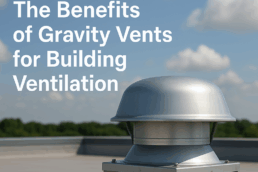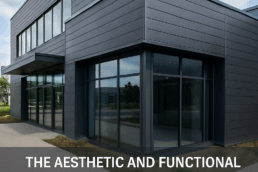Choosing the right material for parapet wall coping is vital for both protection and aesthetics. Parapet wall coping serves as a protective barrier against water infiltration and other environmental elements. It safeguards the structural integrity of your building. It also adds a finishing touch to the building’s design, enhancing its overall appearance.
With a variety of materials available, it’s important to understand their individual benefits and drawbacks. This blog will discuss the best materials for parapet wall coping, considering factors such as durability, aesthetics, and maintenance, to help you make an informed decision for your project.
Common Coping Materials for Parapet Walls
- Metal: Durable and Low-Maintenance
Metal coping is a popular choice due to its durability and low maintenance requirements. It is available in various finishes, including aluminum, stainless steel, and galvanized steel. These materials offer both modern and traditional looks.
- Stone: Classic Look and Excellent Durability
Stone coping offers a classic appearance and exceptional durability. Materials like granite and limestone provide a sophisticated finish and can significantly enhance the aesthetic appeal of a building.
- Concrete: Cost-effective and Versatile
Concrete is a cost-effective and versatile option. It’s suitable for a range of architectural styles and can be molded into different shapes and sizes. This makes it a flexible choice for various design needs.
Factors to Consider When Choosing Parapet Coping Material
- Durability: The durability of the material is a key factor to consider. Materials that can withstand harsh weather conditions and resist wear and tear will guarantee the longevity of your parapet wall coping.
- Aesthetics: Aesthetic appeal is important as the parapet wall coping contributes to the overall look of the building. Choose materials that complement the design and architectural style of your structure.
- Maintenance: Consider the maintenance requirements of each material. Some materials may require regular upkeep to maintain their appearance and functionality, while others are more low-maintenance.
Pros and Cons of Each Coping Material
Metal Coping
- Pros: Metal coping is highly durable and requires minimal maintenance. It is resistant to weather conditions and provides a sleek, modern appearance.
- Cons: The initial cost of metal coping can be higher compared to other materials.
Stone Coping
- Pros: Stone offers an aesthetically pleasing, natural look and is incredibly long-lasting. It adds a touch of elegance to any building.
- Cons: Stone coping is typically more expensive than other options. Its weight may require additional structural support.
Concrete Coping
- Pros: Concrete is a cost-effective solution that offers versatility in design. It can be easily shaped and finished to match various architectural styles.
- Cons: Concrete may require more maintenance over time, such as sealing and repairs. This is to prevent cracks and stains.
Selecting the best material for parapet wall coping depends on your project’s specific needs and budget. Metal coping is ideal for those seeking durability and low maintenance, while stone coping provides a classic, high-end appearance. Concrete coping is a versatile and cost-effective option for various designs. Consider factors like durability, aesthetics, and maintenance to make the right choice for your project.
Need expert advice on choosing the best material for your parapet wall coping? Contact C&J Metal Products for high-quality, custom sheet metal fabrication solutions tailored to your needs. Our experienced team is here to help you every step of the way.



